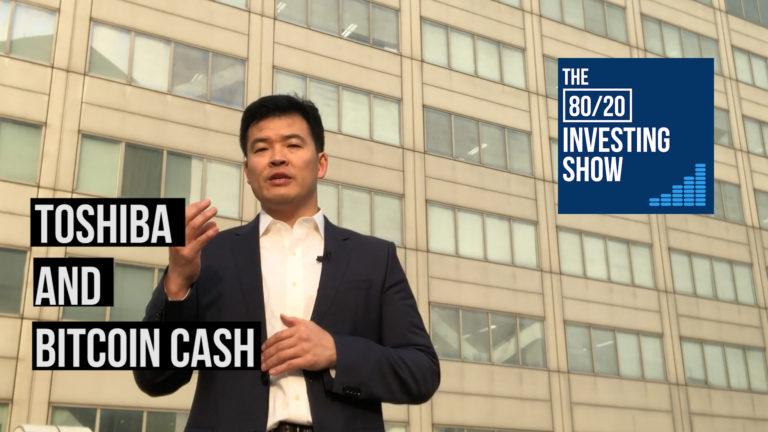Index Funds, What Are They Good For [in 2019]?
“…that some large foundation set up an in-house portfolio that tracks the S&P 500 Index—if only for the purpose of setting up a naïve model against which their in-house gunslingers can measure their prowess.” – Paul Anthony Samuelson
In this article, we’ll look at some of the pros and cons of index funds and index funds investing — information you need to have a good understanding of that will help you in 2019 and understanding index funds and their ETFs in general. We should always remember what index funds are and why they have become to market dominant in fund management.
How are Index Funds Created?
Have you ever considered how indices themselves are constructed? As we have seen, index makers, such as S&P Dow Jones, wield a substantial amount of market power. If a stock is added or dropped off an index list, it necessarily has an enormous impact on the company’s reputation and prospects. Even the mighty S&P 500 undergoes constant changes and adjustments. According to a study by Jeffrey Wurgler, a professor at NYU Stern School of Business, the S&P 500 index undergoes 20 to 25 changes in an average year as companies are added and removed from the index.[i]
This issue may seem irrelevant until you consider that not all stocks within an index are equal. Most reputable index funds mirror benchmark indices that are structured as market-weighted indices. This is another way of saying that the bigger the market capitalization of a stock is, the more influence it has within the index. So if Apple, one of the largest companies in the S&P 500, booms, the price of the entire index goes up. In other words, the index is disproportionately influenced by a large stock such as Apple, Microsoft, or Exxon. That means that if any of these giants experience some form of crisis, you as an S&P 500 holder will also feel the pain, even though the index is made up of 500 US companies.
This has drawn much criticism from parties that argue that their own way of creating indices is more beneficial and delivers better returns. One side effect of market capitalization is that popular industries are always overweight. A good example of this is the boom years of tech and internet stocks in the late 1990s. As internet stocks moved up in price, they flooded major stock market indices. As a result, all indices became more heavily weighted in an overpriced sector. The S&P 500 and Wilshire indices were heavily weighted in companies such as Cisco and Enron, versus old economy stocks such as Exxon and GE. Conservative investors who bought index funds for the balanced diversification they offer were indirectly drawn in by the whole madness of the dot-com bubble. The heavily tech-weighted Nasdaq Index lost over 70% within two years, while general market indices such as the S&P 500 lost more than 50%.
The same phenomenon happened when banks, subprime lenders and homebuilders were heavily overweighted in all major stock indices at the peak of the housing bubble. As we all know, it didn’t end well for the entire financial industry, and there were waves of bankruptcies and government bailouts. Again, all index fund holders disproportionately suffered under the folly of one market sector. Again, major indices such as the S&P 500 lost more than 50% in the wake of the subprime crisis.
Joel Greenblatt – Not a Friend of Index Funds
As Joel Greenblatt, famed investor and author of The Little Book That Still Beats the Market observes, “This is the exact opposite of what an investor should want.” Investors should not be overpaying for assets that could cause substantial losses to their invested capital, especially if they are aware of overpricing and market booms. That’s investing 101. Yet in index fund investing, we are encouraged to do exactly that.”[ii] What he concluded was that with any bubble, market cap-weighted indices will always over-represent the industries that cause a bubble in the first place. Index fund holders would always suffer the consequences of such market anomalies more than they actually deserved or even wanted.
The end of 2018 has given us a foretaste if a few stocks, such as the FANGs drag down entire indices and give us market swings that could easily range between 5 to 6% a day in both directions. 2019 promises to bring more of the same as aglo and computer traders happily drum a new rhythm of market movements and trends with retail investors and pension funds picking up the check. Traditional stock pickers, naysayers and non-believers, on the other hand, are already getting their hopes up as they argue that index funds do terribly in downturn markets and cannot match the performance of skilled stock pickers or fund managers. So according to them, or at least that’s what they hope for, the age of index investing and their ETFs might come to an end. So what are index funds and ETFs good for in 2019?
Remember Low Costs and Fees
Let’s go back to the roots. We should look at the core advantages of both index funds and their ETFs. Investing in an index, you don’t have to pick stocks, nor select and research individual companies, nor consider which sector you should focus on or which businesses in each sector should be watched most closely. All you need to do is buy the full basket of stocks that has already been chosen by an index provider. All the work is effectively done by them, which means you don’t have to pay for expertise or research. According to Jason Zweig, personal finance columnist for The Wall Street Journal, “The machines that run index funds slash the costs of investing by 90% or more by skipping most of the research and trading.” It will remain their core advantage for 2019.
Thanks to enormous developments in computing power and sophistication of trading software, we have seen a revolution on how the world trades on financial markets. Vanguard, BlackRock, et al., have been quietly working on their own ‘autonomous economy’ revolution. Where in active management, there are hordes of analysts, portfolio managers, and support staff with an average salary north of $100,000, less than a tenth of this human workforce is necessary at a well-equipped index fund operation. That’s a lot of potential cost savings, and those savings give index funds a very decisive advantage when it comes to tracking past and future performance.
Index Funds are also more tax efficient than mutual funds. All mutual funds offer tax benefits when offered through retirement plans such as a 401(k) plan, which calculate their contributions before tax deductions. But index funds add another layer of tax advantages, because they trade much less frequently than actively managed funds, avoiding yearly capital tax gain filings. Moreover, index funds never pay out profits that they accumulate from the stocks they own in the form of dividends; the extra money is simply kept and reinvested. For example, if they own ten shares of company X, and make a 10% dividend, rather than paying it out to investors, they’ll simply increase it by another share – ending up with 11. Hence, dividends become free money for the fund manager to play with – and, ultimately, the shareholders to benefit from.
Remember Beating The Pros
Besides their low fees index funds and ETFs offer one more potent advantage over conventional mutual funds and traditional stock pickers – performance!
Index returns are calculated by the income all companies generate, in the form of dividend payments, plus any capital gains measured from the beginning of a calendar year to the end of a calendar year. The leading index funds mirroring the S&P 500 generate returns that represent most of the US stock markets’ total returns. Hence, investors receive US market returns; that is, they benefit from the performance of the market as a whole.
However, it’s not just that index funds are so fascinating for academics and fans; it’s their performance relative to all actively managed mutual funds and the whole industry of money management. All reputable statistics indicate that index funds outperform around 85% or more of other mutual fund managers with similar investment objectives. According to Tony Robbins, “An incredible 96% of actively managed mutual funds fail to beat the market over any sustained period!”[3] Based on some reports, 98.9 percent of US equity funds underperformed over the past ten years, as did 97 percent of emerging market funds and 97.8 percent of global equity funds.
That means index fund performance beats the vast majority of all professional US fund managers every year. Nearly all of those managers who beat the indices in one year almost certainly will not do it in the following years. Among academics, this phenomenon is called mean-reversion, a law that observes that outlier prices and returns eventually move back toward the mean or average. In other words, statistically, if an active investment manager beats the market one year, he is more likely to underperform by the same amount the next.
The situation isn’t much better over the pond in Europe. Four out of five active equity funds failed to beat their benchmark over the past five years, a figure rising to 86 percent over the last ten years, according to S&P’s analysis of the performance of 25,000 active funds. According to the Financial Times, “Almost every actively managed equity fund in Europe investing in global, and emerging markets have failed to beat its benchmark over the past decade, raising more questions about the value fund managers add to the whole investment process.” In Switzerland alone, 95 percent, and 88 percent of those on offer in Denmark, also underperformed. Daniel Ung, director of research at S&P Dow Jones Indices, said: “We are not saying active management is dead, but active managers need to justify what they are doing.”
Index Funds Conclusions
Even that last bastion of professional stock picking and high fees – emerging markets investing – has been suffering under the growth of index funds growth in this sector. Yes, stock picking is still the game in town for those leading fund managers mainly based in London, but their game is slowly coming to an end as most emerging markets get more sophisticated, enjoy increased liquidity, better infrastructure and more index funds and ETF offerings. It will be interesting to see how index fund and their ETFs will perform in Emerging Markets in 2019.

- For retail investors or even pension funds, it’s impossible to time the markets. Nor do they have the skills or expertise to do professional stock selection. That means any strong upturn in 2019 could constitute a sizeable risk to miss the first leg of performance, and with that, it usually means having to catch up for the rest of the year which means being behind the curve all the time.
- It’s the general market consensus that emerging markets investment will fair better than their developed cousins in 2019. For the same reasons as mentioned in one, index funds for emerging markets make investors’ lives easy without missing out.
Whether it will play out, either way, is up to each individual investor to decide. But one thing is sure, index funds and ETFs will continue to play a decisive role in 2019 whether markets fall or rise in developed or emerging market countries.
Continue reading our series on Index Funds & ETFs here as we discuss index fund investing risks and subscribe to our mailing list below!
[i] Huang, Nellie S.. “The Hidden Dangers of Index Funds.” http://www.kiplinger.com/article/investing/T030-C009-S003-the-hidden-dangers-of-index-funds.html (Accessed February 28, 2017)
[ii] Greenblatt, Joel. The Big Secret for the Small Investor: A New Route to Long-Term Investment Success. (New York: Simon & Schuster. 2011)







![The Hog’s View: Two Takeaways From Davos 2018 [The Investor’s View]](https://8020investors.com/wp-content/uploads/2018/01/shutterstock_1011857389_small-768x526.jpg)